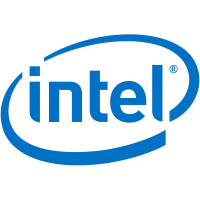AMD Athlon 64 FX-72 vs Intel Celeron 2.10
Comparative analysis of AMD Athlon 64 FX-72 and Intel Celeron 2.10 processors for all known characteristics in the following categories: Essentials, Performance, Memory, Compatibility, Security & Reliability, Advanced Technologies, Virtualization. Benchmark processor performance analysis: PassMark - Single thread mark, PassMark - CPU mark.
Differences
Reasons to consider the AMD Athlon 64 FX-72
- CPU is newer: launch date 4 year(s) 0 month(s) later
- 1 more cores, run more applications at once: 2 vs 1
- Around 33% higher clock speed: 2.8 GHz vs 2.1 GHz
- A newer manufacturing process allows for a more powerful, yet cooler running processor: 90 nm vs 130 nm
- 16x more L1 cache, more data can be stored in the L1 cache for quick access later
- 8x more L2 cache, more data can be stored in the L2 cache for quick access later
- 7.4x better performance in PassMark - CPU mark: 1794 vs 244
| Specifications (specs) | |
| Launch date | November 2006 vs November 2002 |
| Number of cores | 2 vs 1 |
| Maximum frequency | 2.8 GHz vs 2.1 GHz |
| Manufacturing process technology | 90 nm vs 130 nm |
| L1 cache | 128 KB vs 8 KB |
| L2 cache | 1024 KB vs 128 KB |
| Benchmarks | |
| PassMark - CPU mark | 1794 vs 244 |
Reasons to consider the Intel Celeron 2.10
- 2.2x lower typical power consumption: 55.5 Watt vs 125 Watt
| Thermal Design Power (TDP) | 55.5 Watt vs 125 Watt |
Compare benchmarks
CPU 1: AMD Athlon 64 FX-72
CPU 2: Intel Celeron 2.10
| PassMark - CPU mark |
|
|
| Name | AMD Athlon 64 FX-72 | Intel Celeron 2.10 |
|---|---|---|
| PassMark - Single thread mark | 0 | 0 |
| PassMark - CPU mark | 1794 | 244 |
Compare specifications (specs)
| AMD Athlon 64 FX-72 | Intel Celeron 2.10 | |
|---|---|---|
Essentials |
||
| Architecture codename | Windsor | Northwood |
| Launch date | November 2006 | November 2002 |
| Place in performance rating | 3320 | 3348 |
| Vertical segment | Desktop | Desktop |
| Series | Legacy Intel® Celeron® Processor | |
| Status | Discontinued | |
Performance |
||
| 64 bit support | ||
| Die size | 235 mm | 131 mm2 |
| L1 cache | 128 KB | 8 KB |
| L2 cache | 1024 KB | 128 KB |
| Manufacturing process technology | 90 nm | 130 nm |
| Maximum frequency | 2.8 GHz | 2.1 GHz |
| Number of cores | 2 | 1 |
| Transistor count | 227 million | 55 million |
| Base frequency | 2.10 GHz | |
| Bus Speed | 400 MHz FSB | |
| Maximum core temperature | 69°C | |
| VID voltage range | 1.315V-1.525V | |
Memory |
||
| Supported memory types | DDR1 | DDR1, DDR2 |
Compatibility |
||
| Max number of CPUs in a configuration | 1 | 1 |
| Sockets supported | F | PPGA478 |
| Thermal Design Power (TDP) | 125 Watt | 55.5 Watt |
| Low Halogen Options Available | ||
| Package Size | 35mm x 35mm | |
Security & Reliability |
||
| Execute Disable Bit (EDB) | ||
| Intel® Trusted Execution technology (TXT) | ||
Advanced Technologies |
||
| Enhanced Intel SpeedStep® technology | ||
| FSB parity | ||
| Idle States | ||
| Intel 64 | ||
| Intel® Demand Based Switching | ||
| Intel® Hyper-Threading technology | ||
| Intel® Turbo Boost technology | ||
| Physical Address Extensions (PAE) | 32-bit | |
Virtualization |
||
| Intel® Virtualization Technology (VT-x) | ||








